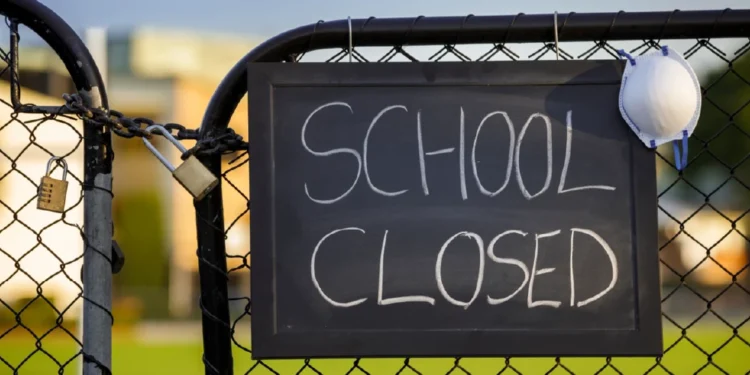A recent study from the University of Washington and Oxford found school closures caused by COVID-19 in 2020 will cost the U.S. economy $2 trillion.
The staggering future deficit mainly stems from setbacks in student learning. The study revealed a significant global learning shortfall from the pandemic that needs to be addressed.
Researchers explained a combination of masks, testing, social distancing and targeted shutdowns could have cut the pandemic’s cost from $4.6 trillion to $1.9 trillion.
“U.S. COVID-19 school closure was not cost-effective, but other measures were,” the study stated.
Researchers found lockdowns were most effective when they were implemented early and were strict. They also found that while lockdowns substantially lessened the spread of COVID-19, they had severe social and economic consequences, including disrupting the economy, creating job loss, and degrading student learning.
Health, economic, and social impacts were felt overwhelmingly by marginalized communities.
However, researchers noted that high-quality evidence on the economic impact of non-pharmaceutical interventions was hard to find.
“Regarding cost-effectiveness, testing, contact tracing, quarantine, and social distancing were identified as highly cost-effective, but the available reviews noted a lack of quality research and conclusive evidence,” the study stated.
The $2 trillion economic cost from school closures reflects not just immediate educational disruption but long-term impacts on lifetime earnings, productivity, and economic growth as students who fell behind academically enter the workforce with diminished skills and credentials.
The University of Washington’s involvement in the study carries particular significance for Seattle-area families who experienced some of the nation’s longest school closures, with Seattle Public Schools remaining primarily remote for over a year during 2020-2021.
The study’s finding that alternative strategies, masks, testing, social distancing, and targeted shutdowns, could have reduced total pandemic costs from $4.6 trillion to $1.9 trillion suggests extended school closures were among the most economically damaging policy choices made during the pandemic response.
The disproportionate impact on marginalized communities reflects patterns where low-income families lacked resources for effective remote learning, reliable internet, quiet study spaces, parental supervision, while wealthier families hired tutors and accessed private pods that mitigated learning loss.
Washington state’s experience with school closures varied dramatically by district, with some rural and suburban schools reopening for in-person instruction months before Seattle and other urban districts, creating uneven educational impacts across the state.
The researchers’ observation about lack of high-quality evidence on economic impacts of non-pharmaceutical interventions highlights how policymakers made consequential decisions about school closures without rigorous cost-benefit analysis or understanding of long-term economic consequences.
The finding that early, strict lockdowns were most effective challenges the prolonged closure approach many districts adopted, suggesting brief, decisive shutdowns might have achieved public health goals with less educational disruption than extended remote learning periods.
Testing, contact tracing, quarantine, and social distancing identified as “highly cost-effective” represents strategies Seattle schools implemented inconsistently or belatedly, raising questions about whether earlier adoption could have prevented or shortened closure periods.







